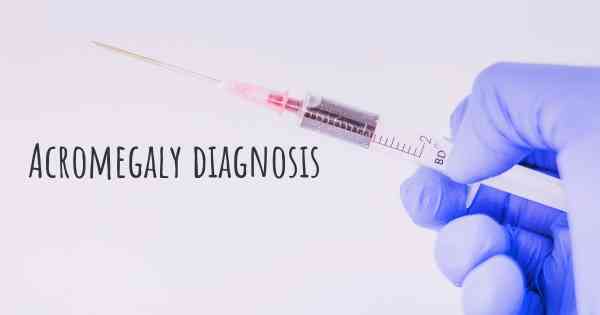How is Acromegaly diagnosed?
See how Acromegaly is diagnosed. Which specialists are essential to meet, what tests are needed and other useful information for the diagnosis of Acromegaly

Diagnosis of Acromegaly
Acromegaly is a rare hormonal disorder that occurs when the pituitary gland produces excessive growth hormone (GH) after the closure of the growth plates in the bones. This condition leads to the enlargement of various body parts, such as the hands, feet, and facial features. Early diagnosis and treatment of acromegaly are crucial to prevent complications and improve the quality of life for affected individuals.
Medical History and Physical Examination
The diagnosis of acromegaly typically begins with a thorough medical history and physical examination. The healthcare provider will inquire about the patient's symptoms, family history, and any previous medical conditions. They will also assess the patient's physical appearance, looking for signs of enlarged hands, feet, facial changes, and other characteristic features associated with acromegaly.
Hormone Testing
Measuring the levels of growth hormone (GH) and insulin-like growth factor 1 (IGF-1) in the blood is a key step in diagnosing acromegaly. GH levels are typically elevated in individuals with acromegaly, especially during an oral glucose tolerance test (OGTT). During an OGTT, blood samples are taken before and after the patient drinks a glucose solution. In acromegaly, GH levels fail to suppress as they normally would in response to glucose ingestion. IGF-1 levels are also elevated in most cases of acromegaly and can be measured to confirm the diagnosis.
Imaging Studies
Imaging studies are essential to visualize the pituitary gland and detect any tumors or abnormalities. The most commonly used imaging technique is magnetic resonance imaging (MRI) of the brain. An MRI can provide detailed images of the pituitary gland and surrounding structures, allowing the healthcare provider to identify the presence of a pituitary adenoma, which is the most common cause of acromegaly.
Visual Field Testing
As pituitary adenomas grow, they can compress the optic nerves, leading to visual field defects. Therefore, visual field testing is often performed to assess any potential damage to the optic nerves. This test involves the patient looking into a machine and pressing a button whenever they see a light appear in their peripheral vision. Any abnormalities in the visual field may indicate the presence of a pituitary adenoma.
Additional Diagnostic Procedures
In some cases, additional diagnostic procedures may be necessary to confirm the diagnosis or assess the extent of the disease. These may include:
- Computed Tomography (CT) Scan: CT scans can provide detailed images of the bones and detect any changes associated with acromegaly, such as thickening of the skull or enlargement of the sinuses.
- Dual-Energy X-ray Absorptiometry (DEXA) Scan: This scan measures bone density and can help identify any bone abnormalities caused by acromegaly.
- Echocardiogram: An echocardiogram uses sound waves to create images of the heart. It can help evaluate the cardiac function and detect any abnormalities caused by acromegaly, such as an enlarged heart.
Collaboration with Specialists
Diagnosing and managing acromegaly often requires a multidisciplinary approach involving various healthcare professionals. Endocrinologists, neurosurgeons, radiologists, and ophthalmologists are among the specialists who may be involved in the diagnosis and treatment of acromegaly. Collaboration between these experts ensures a comprehensive evaluation and appropriate management of the condition.
Conclusion
Diagnosing acromegaly involves a combination of medical history, physical examination, hormone testing, imaging studies, visual field testing, and sometimes additional diagnostic procedures. Early detection and treatment are essential to prevent complications and improve the long-term outcomes for individuals with acromegaly. If you suspect you or someone you know may have acromegaly, it is important to consult with a healthcare professional for proper evaluation and diagnosis.
Posted Mar 1, 2017 by seast318 2050








